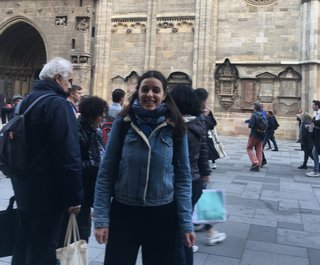European Geophysical Union (EGU) General Assembly 2019 is one of the largest meetings in Earth and Space science in the world. The conference was held at the beautiful Austria Center Vienna (ACV) and this year it hosted 16,273 scientists from 113 countries. All these scientists, making me proud to be one of them, were part of a very interesting program that was made of 5,531 oral, 9,432 poster, and 1,287 PICO presentations.
This year the project that investigates and tries to find and explain the mechanisms that govern the Arctic amplification (AC3) had its own session (CR8.1/AS1.42: Clouds and precipitation in the Polar Regions: sources, processes and impacts. Since I am a part of the AC3 project, I have had my poster in this session.
My work that considers changes of most abounded greenhouse gas (GHS), namely water vapour, in the Arctic from satellites instruments and the reanalyses was well visited and I have managed to network and to exchange the ideas with the scientist from a different countries. It made me very glad to receive a positive feedback and to know what kind of work has been done elsewhere considering the same issue.
Moreover, since Vienna is a very much lively city it was nice to walk around it shortly with my colleagues and to enjoy the beauty of this historical city. I have really enjoyed being part of this event and am grateful that GSGS gave me the opportunity to participate at it.
Ana Radovan
PhD student
PhD project: „Variability and trends of water vapour in the Arctic – the role of polar lows and atmospheric rivers “
Institute of Geophysics and Meteorology
Investigating spatial and temporal variability of Arctic water vapor from passive microwave radiometry and Arctic system reanalysis (ASR) (poster: https://meetingorganizer.copernicus.org/EGU2019/EGU2019-16856.pdf )
